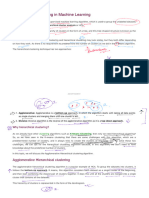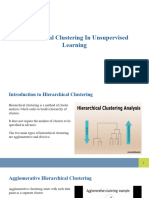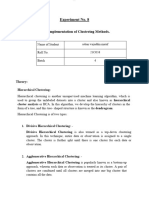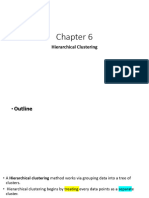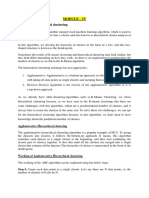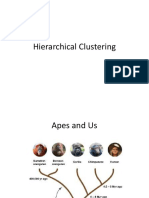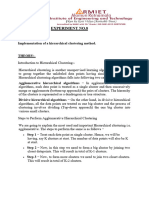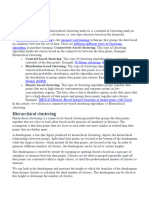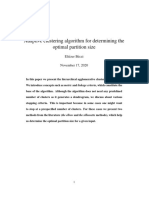0% found this document useful (0 votes)
22 views10 pagesHierarchical Clustering in Machine Learning
Hierarchical clustering is an unsupervised machine learning algorithm used to group unlabeled datasets into clusters, represented as a tree structure called a dendrogram. It has two main approaches: agglomerative, which merges single data point clusters into one, and divisive, which splits a single cluster into smaller ones. The process involves repeatedly merging or dividing clusters until a desired structure is achieved.
Uploaded by
shagunverma2525Copyright
© © All Rights Reserved
We take content rights seriously. If you suspect this is your content, claim it here.
Available Formats
Download as PPTX, PDF, TXT or read online on Scribd
0% found this document useful (0 votes)
22 views10 pagesHierarchical Clustering in Machine Learning
Hierarchical clustering is an unsupervised machine learning algorithm used to group unlabeled datasets into clusters, represented as a tree structure called a dendrogram. It has two main approaches: agglomerative, which merges single data point clusters into one, and divisive, which splits a single cluster into smaller ones. The process involves repeatedly merging or dividing clusters until a desired structure is achieved.
Uploaded by
shagunverma2525Copyright
© © All Rights Reserved
We take content rights seriously. If you suspect this is your content, claim it here.
Available Formats
Download as PPTX, PDF, TXT or read online on Scribd
/ 10





